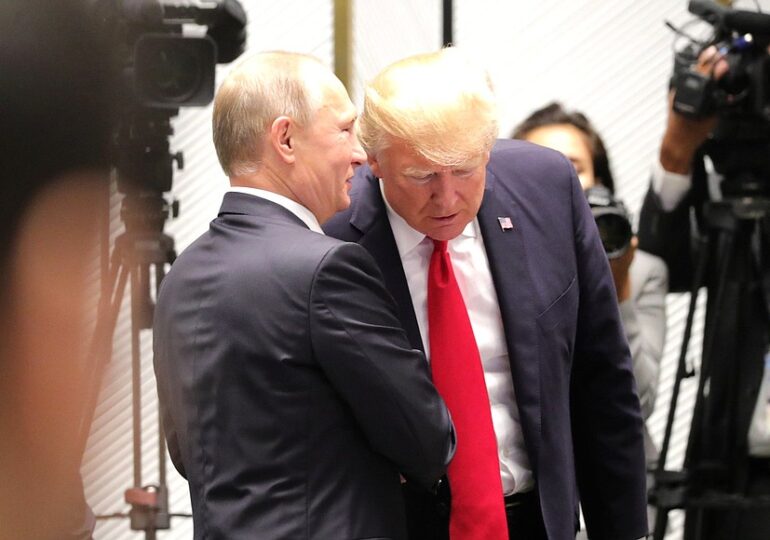A summit between American President Donald Trump and Russian leader Vladimir Putin has been rumored for some time by both parties. But why would each now want the meeting to take place?
This is the question that British journalist Nick Paton Walsh tries to answer in an extensive analysis for CNN.
Trump seeks to assert his will in an attempt to reach an agreement, believing that Moscow's six months of intransigence could be overcome by a face-to-face meeting with Putin. He still seems to believe that he can persuade Russia to stop the war, despite Putin's recent statements, who claims that "the Russian and Ukrainian peoples are one and the same" and that "wherever a Russian soldier steps, that place is Russia."
Putin, on the other hand, seeks to gain time. After rejecting a proposal for an unconditional ceasefire in May from the US, Europe, and Ukraine, he has only offered two unilateral, short, and insignificant pauses. Meanwhile, the Russian army is advancing in the summer offensive, approaching objectives that could radically change the terms of negotiations in the fall.
If the meeting takes place, an apparent goal of the US is to organize a trilateral summit, with the participation of Ukrainian President Volodymyr Zelenskyy - the same format that Russia rejected in May in Istanbul.
Moscow's goal would rather be to draw Trump into the sphere of the Russian narrative. However, Putin has so far rejected the trilateral, agreeing to meet only with Trump.
The essential question is: how could this war end?
Walsh presents 5 possible scenarios:
1. Putin accepts an unconditional ceasefire
Highly unlikely. The Kremlin has already rejected such a proposal in May, despite the threat of sanctions. Trump has avoided sanctions, preferring discussions in a limited format in Istanbul, which have had no results. A 30-day ceasefire regarding energy infrastructure had limited effects.
Russia is currently turning tactical gains on the front into strategic advantages and has no reason to stop. Not even the threat of secondary sanctions against China and India - which resist US pressures - will change this military equation. At least until October, Putin will continue to fight because he believes he is winning.
2. Pragmatism and prolonged negotiations
Negotiations could lead only to... more negotiations, which would confirm the territories gained by the Russians, when winter blocks the front lines. By then, Putin may have conquered the eastern cities of Pokrovsk, Kostiantynivka, and Kupiansk, offering him a favorable position for consolidation.
Later, Russia could resume the offensive in 2026 or could use diplomacy to keep these gains. Putin could also invoke the issue of elections in Ukraine - postponed due to the war and, for a while, a favorite theme of Trump - to question Zelenskyy's legitimacy and may even support a more pro-Russian candidate.
3. Ukraine resists another two years
In an optimistic scenario, US and European military support helps Ukraine limit territorial concessions, and Russia, once again, fails to make decisive advances.
Pokrovsk may fall, but the Russian advance may slow down, and sanctions and the overheating economy could begin to affect the Kremlin.
Europe already has advanced plans for a "reassurance force" to be deployed in Ukraine as part of security guarantees. Tens of thousands of NATO European troops could be stationed around Kyiv and other major cities, offering logistical and intelligence support. This deployment could deter Moscow from resuming the offensive. It is the best possible scenario for Ukraine.
4. Disaster for Ukraine and NATO
Putin could interpret the summit with Trump as a signal of a rupture in Western unity, taking advantage of a US-Russia rapprochement that leaves Ukraine vulnerable. Europe, even if it wants to help Kyiv, cannot tilt the balance without American support.
Russian territorial gains in the east could turn into a broad offensive towards the cities of Dnipro, Zaporizhzhia, and even the capital Kyiv. The Ukrainian military personnel crisis turns into a political crisis if Zelenskyy calls for general mobilization.
Europe could assess that it is better to stop Russia in Ukraine than to fight with it on its own territory, but it lacks political mandate for direct involvement in the war. NATO does not provide a unified response. Ukraine becomes history as a sovereign state. It is Europe's nightmare.
5. Disaster for Putin: a new Afghanistan
Russia could continue the offensive, losing thousands of soldiers for minor gains, while sanctions affect its relations with China and revenues from India.
The sovereign fund reserves thin out, and Moscow elites become increasingly dissatisfied with the diplomatic refusal of the Kremlin.
If Trump becomes a weakened president, and the US reorients towards the classic foreign policy of opposition to Moscow and Beijing, pressure on Russia will increase. Kremlin's resistance to reality and increasing poverty could become fatal.
This is the scenario that many Western strategists see as the only way Russia can be defeated, but also the least predictable. Sudden collapses of Russian authority have occurred before - we remember Prigojin's failed revolt over Moscow.
Putin seems strong on the surface until he reveals his weaknesses, and then he can be completely vulnerable. It has happened before, just like with the USSR. The problem is that this scenario remains the only "hope" that the West sees as not wanting direct NATO involvement in the war and not believing that Ukraine can win alone.
Ukraine has only bad scenarios
None of these scenarios is truly good for Ukraine. Only one of them brings Russia's defeat as a military power and a threat to European security.
And none can result from a simple meeting between Trump and Putin without Ukraine being part of the final agreement.
G.P.

